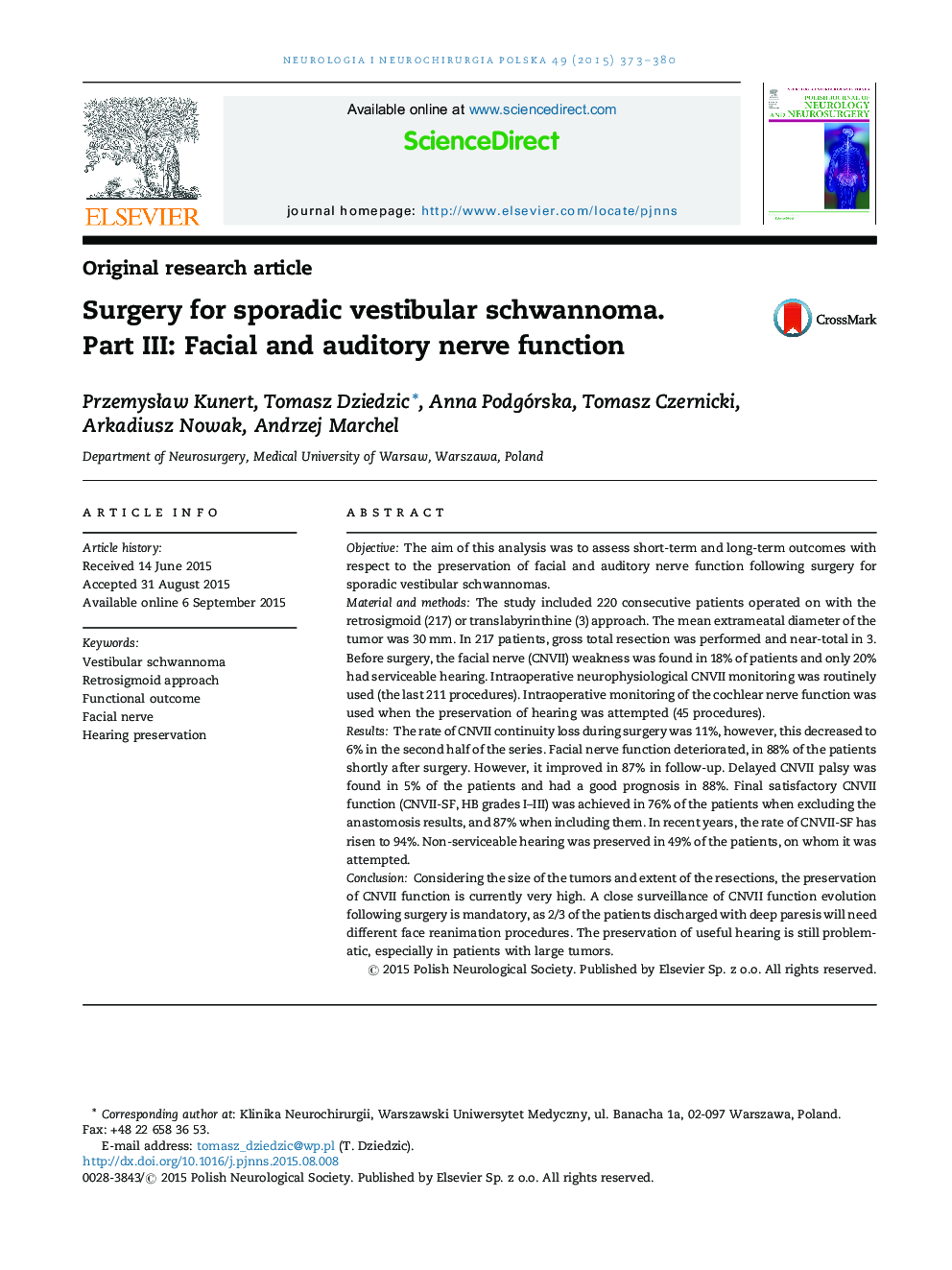| کد مقاله | کد نشریه | سال انتشار | مقاله انگلیسی | نسخه تمام متن |
|---|---|---|---|---|
| 2152736 | 1090134 | 2015 | 8 صفحه PDF | دانلود رایگان |

ObjectiveThe aim of this analysis was to assess short-term and long-term outcomes with respect to the preservation of facial and auditory nerve function following surgery for sporadic vestibular schwannomas.Material and methodsThe study included 220 consecutive patients operated on with the retrosigmoid (217) or translabyrinthine (3) approach. The mean extrameatal diameter of the tumor was 30 mm. In 217 patients, gross total resection was performed and near-total in 3. Before surgery, the facial nerve (CNVII) weakness was found in 18% of patients and only 20% had serviceable hearing. Intraoperative neurophysiological CNVII monitoring was routinely used (the last 211 procedures). Intraoperative monitoring of the cochlear nerve function was used when the preservation of hearing was attempted (45 procedures).ResultsThe rate of CNVII continuity loss during surgery was 11%, however, this decreased to 6% in the second half of the series. Facial nerve function deteriorated, in 88% of the patients shortly after surgery. However, it improved in 87% in follow-up. Delayed CNVII palsy was found in 5% of the patients and had a good prognosis in 88%. Final satisfactory CNVII function (CNVII-SF, HB grades I–III) was achieved in 76% of the patients when excluding the anastomosis results, and 87% when including them. In recent years, the rate of CNVII-SF has risen to 94%. Non-serviceable hearing was preserved in 49% of the patients, on whom it was attempted.ConclusionConsidering the size of the tumors and extent of the resections, the preservation of CNVII function is currently very high. A close surveillance of CNVII function evolution following surgery is mandatory, as 2/3 of the patients discharged with deep paresis will need different face reanimation procedures. The preservation of useful hearing is still problematic, especially in patients with large tumors.
Journal: Neurologia i Neurochirurgia Polska - Volume 49, Issue 6, November–December 2015, Pages 373–380